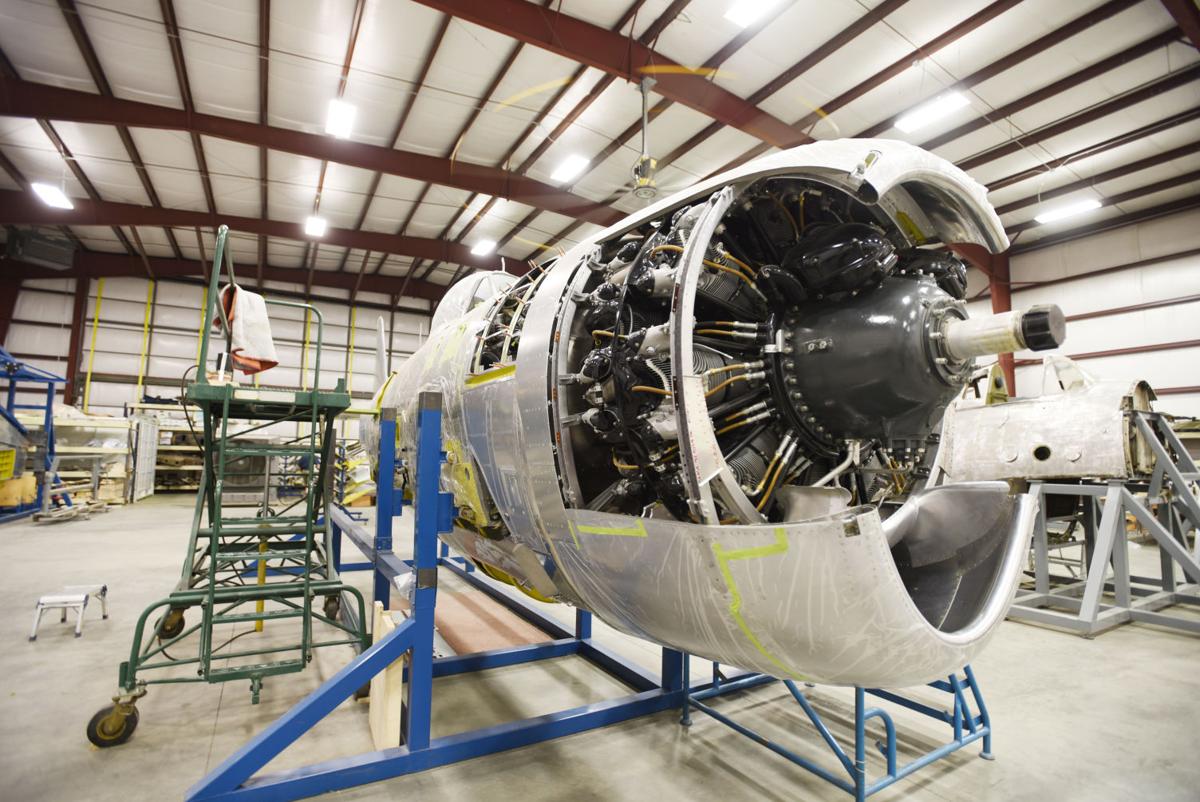
Quote:
For 60 years, Dottie Mae lay at the bottom of a lake in Austria, resigned to a watery grave after serving more than 90 combat missions in World War II.
The aircraft survived until the last day of the war, when it went down during a demonstration flight to celebrate the end of the war. The pilot of the P-47, Lt. Henry Mohr, was flying low over the lake and hit the water. He nearly sank with the plane but was rescued.
That was May 8, 1945. It wasn’t until June 2005 that Dottie Mae was pulled from the water.
The plane is now in Caldwell, where a local business called Vintage Airframes has taken on the painstaking task of restoring her with the ultimate goal of seeing her take to the skies once again.
“This is the most complicated airplane I’ve ever worked on and probably will ever work on,” said Mike Breshears, owner of Vintage Airframes. “It’s a very tough airplane to build.”
The plane has been in Caldwell since 2010, and still has about a year left of restoration work, he said. Once finished, it will go to back to its owner in California.
The crew uses blueprints from the Smithsonian to follow the exact plan for the plane, down to mapping out the color of the rivets. They’re making everything the same way it was done in 1944.
“It will be the most accurate and historically correct P-47 in the world,” Breshears said. “No one’s ever taken it to this extent.”
Considering where the plane had been for six decades, it was actually in fairly good shape when it was pulled out of the lake.
Pictures from the recovery show the name Dottie Mae was still visible on the side of the plane along with the nose art, which was modeled after the December pin-up girl in the 1945 Vargas calendar titled “Santa’s Little Helper.”
Staying at the bottom of the lake may have also helped Dottie Mae escape the fate that befell others like her. Most of the surviving P-47s were scrapped in the summer of 1945. Nineteen of the planes were flown to an airfield near Paris to be delivered to the French, according to the history of Dottie Mae chronicled on the website alliedfighters.com.
According to the website, the aircraft was built in Evansville, Indiana, in the summer of 1944, one of 1,028 made at that location.
The plane was issued to the Ninth Air Force and ended up in France. Lt. Larry Kuhl was assigned the new plane. He had a ground crew member paint “Dottie Mae” on the side of the plane, which was the name of Kuhl’s wife at the time. The names of crew members were painted on the other side of the plane and the pin-up nose art was added.
Kuhl now lives in Washington and has been keeping up with the restoration process, Breshears said. Kuhl and the plane’s armorer, Sgt. Leonard Hitchman, reunited with the plane in Caldwell in 2013 for the first time in more than 60 years.
“Who would ever think we’d see it again after 70 years,” Hitchman said in a video of the reunion made by Allied Fighters. “To see what the restoration process has produced and how wonderful everything seems to be shaping up.”
Dottie Mae primarily served as air support for the U.S. Army, but the aircraft also hit targets of opportunity such as bridges and ground vehicles.
The aircraft was damaged and repaired about four times, before her last mission took her down.
The week prior, the P-47 had helped liberate a concentration camp, Breshears said.
Breshears started working on planes in the Air Force and continued with his own business after he got out. He’s been restoring planes for more than 20 years. One of the planes he restored is in the Museum of Flight.
A Navy Hellcat sits next to Dottie Mae in Caldwell, which Vintage Airframes is also working to restore.
“It’s a great job and, it means a lot to let the vets see their heritage being restored and to be remembered,” Breshears said.
Found it here:
http://www.idahopress.com/members/caldw ... b78e6.html




